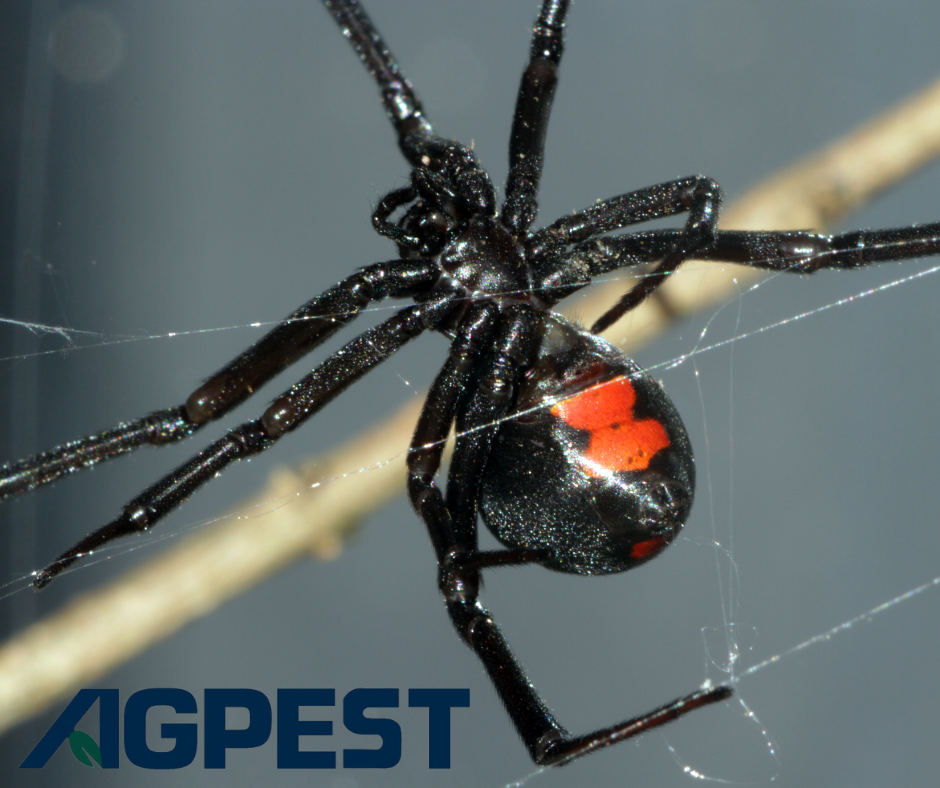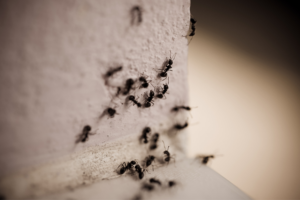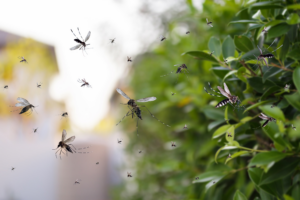San Diego’s warm climate is home to a variety of spiders, some of which can pose a threat to humans. While most spiders are harmless and even beneficial in controlling pest populations, a few species have venomous bites that can cause serious health concerns. In this blog, we’ll explore the most dangerous spiders in San Diego, how to identify them, where they’re commonly found, and what to do if you encounter one. We’ll also provide tips to keep them out of your home.
Dangerous Spiders in San Diego
1. Western Black Widow Spider (Latrodectus hesperus)
How to Identify a Western Black Widow
One of the most notorious spiders in Southern California, the western black widow spider, is easily recognized by its glossy black body and the distinct red hourglass marking on its abdomen. Females, which are the most dangerous, measure about 1.5 inches when their legs are fully extended. Males are smaller and less venomous.
Why It’s Dangerous
Western black widow spiders have potent neurotoxic venom that affects the nervous system. While their bites are rarely fatal, they can cause intense pain, muscle cramps, sweating, nausea, and difficulty breathing in severe cases. Immediate medical attention is recommended if bitten.
Where They Are Commonly Found
Black widow spiders prefer dark, undisturbed areas. They are often found in:
- Woodpiles
- Garage corners
- Outdoor furniture
- Sheds
- Under decks
2. Brown Widow Spider (Latrodectus geometricus)
How to Identify a Brown Widow
The brown widow spider is similar in shape to the black widow but is lighter in color, ranging from tan to dark brown with a faint orange hourglass marking. They also have spiky egg sacs, which distinguish them from other widow species.
Why They Are Dangerous
Brown widow spider bites are less severe than those of the black widow, but they still contain neurotoxic venom that can cause pain, muscle stiffness, and localized swelling. While their venom is not as potent, children and the elderly may experience stronger reactions.
Where They Are Commonly Found
Brown widow spiders are more common in urban environments and can be found in:
- Patio furniture
- Undersides of railings
- Garden equipment
- Eaves and fences
3. Brown Recluse Spider (Loxosceles reclusa)
How to Identify a Brown Recluse
Brown recluse spiders are light to dark brown and have a distinct violin-shaped marking on their backs. They have six eyes arranged in pairs, rather than the typical eight eyes found in most spiders.
Why They Are Dangerous
Brown recluse spiders have necrotic venom that can destroy skin tissue, leading to ulcer-like wounds. While some bites heal on their own, severe reactions can result in open sores that take weeks or months to recover. In rare cases, systemic reactions such as fever, chills, and dizziness may occur.
Where They Are Commonly Found
Brown recluse spiders prefer dry, secluded areas such as:
- Attics
- Basements
- Closets
- Storage boxes
What to Do If You Encounter a Dangerous Spider
If you come across one of these venomous spiders in your home or yard, follow these steps:
- Do not provoke the spider. Most will not bite unless threatened.
- Back away slowly. If it is in a frequently used area, consider capturing it safely in a jar for identification.
- Contact a pest control company in San Diego. A professional can assess the situation and provide safe removal options.
- If bitten, seek medical attention immediately. Wash the bite area with soap and water, apply ice, and monitor for severe symptoms.
Tips to Keep Spiders Out of Your Home
While dangerous spiders in San Diego can find their way inside homes, you can take preventative measures to reduce the risk:
1. Seal Entry Points
- Inspect and seal cracks in walls, windows, and door frames.
- Install weather stripping on doors to block small gaps.
- Use fine mesh screens on vents and windows.
2. Reduce Clutter
- Store firewood, boxes, and debris away from the house.
- Keep basements, attics, and storage areas tidy.
- Use plastic storage bins instead of cardboard, as spiders can easily hide in cardboard boxes.
3. Eliminate Their Food Source
- Reduce insect populations by keeping your home clean and free of food crumbs.
- Use proper waste disposal methods to prevent attracting other pests.
4. Use Natural Repellents
- Spray vinegar or essential oils such as peppermint, tea tree, or eucalyptus around entry points.
- Keep outdoor lights off when not needed to avoid attracting insects that spiders feed on.
5. Hire a Professional Pest Control Company
If you’re dealing with a spider infestation or are concerned about venomous spider bites, contact a trusted pest control company in San Diego. Professional pest control experts can safely remove dangerous spiders and implement long-term solutions to keep your home spider-free.
Final Thoughts
While encountering venomous spiders can be alarming, taking proactive steps to keep them out of your home and knowing how to respond if bitten can help ensure your safety. If you suspect a spider problem, don’t hesitate to seek professional pest control in San Diego for thorough inspection and effective treatment.
Protect your home and family—stay informed, stay prepared, and keep your space spider-free!



